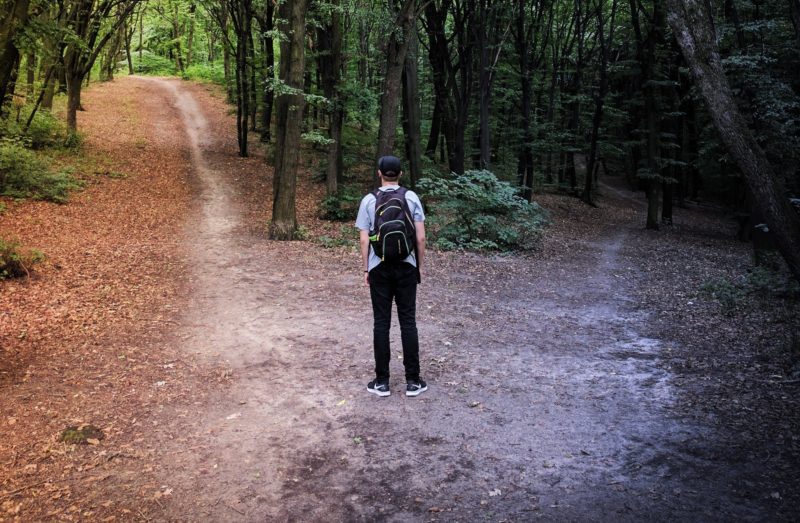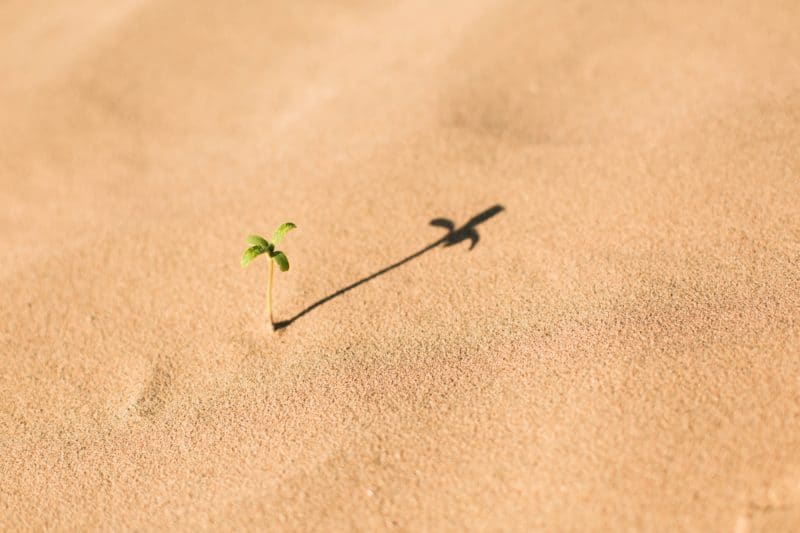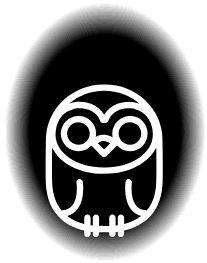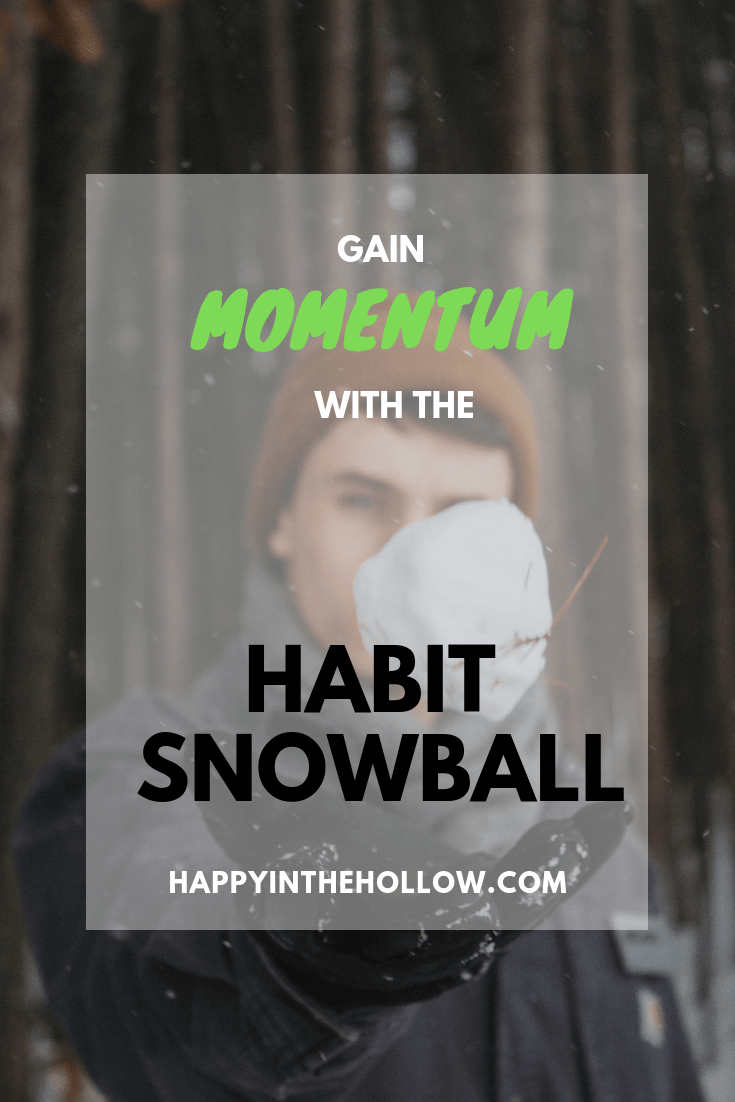Use the habit snowball to build a happier, healthier life, focusing on one habit at a time for growing momentum.

Table of Contents
A year of good habits and self-improvement
Let’s talk about habits!
Yeah, I know. it’s already mid-January, so officially the ship has sailed for New Year’s resolutions.
But after a great conversation I had last week, I’m feeling inspired, and I want to share my thoughts with you.
I’ve been reading a ton of self-improvement books over the past months, so I’m raring to tackle many worthwhile goals all at once.
Sleep more. Meditate daily. Build a business. Cut the sugar.
So much self-betterment can get overwhelming!
I’ve decided to make things simple and focus on one habit at a time.
When I brought this up in a recent conversation with Anthony Ongaro – one of my favorite YouTubers, who’s building a community around minimalism, habits, and creativity – he responded with an image that immediately resonated with me:
Anthony compared habit change to Dave Ramsey’s debt snowball.
Let’s get the habit snowball rolling!
Check out Anthony Ongaro’s YouTube channel! His intro video will give you a taste of what I like about his work: it’s uncluttered, personable, and helpful with great insights into how tuning out distractions can help focus your life on what matters most to you.

What is the debt snowball?
You may be familiar with Dave Ramsey’s debt snowball.
It’s “baby step 2” in his 7-step plan to financial freedom, right after you build a $1000 emergency fund.
The idea is to tackle your debts one at a time, from smallest to largest. You dial payments on all but one balance down to the minimum and throw everything you’ve got at that one debt until it’s gone.
With that success under your belt, you move on to the next balance with increasing drive.
It’s like starting with a fistful of snow and rolling it around the yard, gathering surface area, material and momentum until you’ve got a humongous snowball. Hence the “debt snowball.”
Now, you’ve probably heard the idea of the “snowball effect” applied to all kinds of situations – from engineering to psychology.
Read on to find out how I think aspects of the debt snowball are an especially useful comparison for habits.
For more details on the debt snowball, check out Dave Ramsey’s book, Total Money Makeover.
(While I don’t endorse every last aspect of his approach – for example, I don’t believe credit cards are evil, there’s a place for using them responsibly and to earn rewards – it has helped many, many people dig their way out of debt toward a more financially stable life.)
A few words about willpower
Let’s start with the force behind forming habits – willpower.
Like money, our reserves of energy are limited. That includes mental energy.
To pile on the analogies: Willpower is like a muscle. It gets tired with use. The more choices you have to make, the more you’ll approach decision fatigue. (Though, as we’ll see, with some training you can also build it up.)

Our days are filled with decisions: Chamomile or peppermint tea with breakfast? Blue blouse or black t-shirt? Walk or drive to the grocery store? Work on the big project or write an email first?
Every time you automate or pre-plan one of these processes, you save some precious decision energy.
Once you’ve made a habit of laying out your clothes for the next day every night, you’ve created a little bit of extra mental space for focusing on, say, sticking to an omelet instead of a doughnut for breakfast.
Effortlessly well nourished, you move on to establishing a daily meditation practice.
The habit snowball
I’m sure you’re already getting the idea how the snowball is a useful method and image to apply to habits:
You focus
Instead of throwing dollars at various debts willy-nilly or – in our case – trying to cut sugar while also practicing your guitar daily, you pick one goal. Then you give it your all.

You build momentum
Just like not having to pay interest on your student loan frees up funds to pay off your credit card, habits free up energy that you can now expend elsewhere. Each automated behavior you execute with minimal friction builds momentum for making more changes. Your habit snowball grows.
You gain confidence
In a related win, with each newly adopted habit, you learn that you’re capable of making changes. This gives you confidence to tackle the next goal.
You strengthen your habit muscles
As you use your willpower to solidify each habit, you may build up greater willpower strength.

Photo: Alora Griffiths (Unsplash)
Building a foundation
What I especially like about consciously choosing one goal at a time is the opportunity to strategically craft a habit foundation for a healthier, happier life.
Think of it as not only “building” habits but also “building with” habits.
When I consider what I’d like to improve in my life, some habits seem more fundamental than others – the cornerstones, if you will. (In fact, after writing this I came across the idea of “keystone habits” that Charles Duhigg describes in The Power of Habit, clearly a book I should read very soon.)
Take sleep, for example. It’s foundational for mental and physical health, let alone our ability to thrive. (It’s LeBron James’s number one tool for recovery and high performance, and who can argue with that!)
That’s why I’ve chosen to focus on sleep first this year. I believe that once I get enough rest, I will have more mental and physical energy to make good on my promise to myself to get back to my pre-baby-2 fitness level.

Getting more exercise, in turn, will solidify the quality of my sleep, help reinforce my determination to banish most refined sugars from my life, and generally increase my willpower.
I love how these habits reinforce each other and will make it a lot easier to make progress on everything else.
Choose your order
One frequent criticism of Dave Ramsey’s snowball method is that it asks people to wipe out balances from smallest to largest, regardless of the interest rate.
To minimize the amount of interest paid, it would actually make more sense to wipe out debts with high APRs first (a method sometimes called the “debt avalanche.”)
But Ramsey argues that “hope has more to do with this equation than math ever will.” That is, celebrating small wins at the beginning is what helps to the journey look a lot less daunting and cement new behaviors.

Fair enough. I’d rather get started on the debt-free journey than remain paralyzed in inaction. Whatever works best.
The same principle applies with habits: I believe it makes sense to attack some of the foundational habits, such as sleep, first. They’re the equivalent to the high interest rates in our analogy. (How apropos that we talk about sleep “debt.”)
But maybe that requires making serious changes in your schedule, or improving your relationship with electronics use in the evening, and that just feels like too much at once.
So in order to get started, you may want to just choose a small goal, such as drinking more water every day. All it takes is carrying a bottle with you, or filling a number of water bottles the night before and making sure you empty them the next day.
Goal 1 – check! On to the next.
The habit snowball in practice
What is my habit snowball going to look like in real life?
Here’s my plan: I’m going to work on one habit at a time for one to two months each, for the rest of the year. I’ll start with my “fundamental” habits.
Why this approach?
- The amount of time it takes for a habit to stick varies. In one 2009 study, the average was 66 days, with a pretty wide range. I’m going to start with 30 days because that feels manageable and may add a second month if I feel like a habit isn’t sticking yet.
- I get to tackle up to 12 habits this year.
- By starting with what I consider to be the most important habits, I hope to build self-reinforcing momentum.

Here’s where I’m starting:
- Sleep: Prioritize getting enough and high-quality sleep.
- Exercise: Get back into a regular routine
- Reduce or cut sugar: Kick this energy thief out of my life.
- Meditation: Build a daily habit that goes beyond my sporadic attempts. (I already use some shorter practices throughout my day.)
- Declutter: This will take at least two months…I’ve gotten pretty good at letting things go, but I haven’t yet internalized the process of not letting things into the house.
- Bilingualism: This one’s really important to me but a bit daunting, because it involves my kids and to some extent my husband. Raising my kids bilingual (English-German) is a huge priority for me, but it’s been a lot harder than I expected. I want to put language habits (regular book reading, German-only video rules for certain times of day, learning routines) in place.
There’s a lot more to be said about the finer points of habit change, and I hope to get to them in a future post.
Meanwhile, for a fantastic read on habits (I’ve just started digging into it), check out Atomic Habits by James Clear.
I’d love to hear from you! Are you planning on making any changes this year? Which ones? What method are you using? Comment below or send me an email!
For more inspiration and practical solutions for an intentional, sustainable, affordable, and simply happy life, sign up here for my newsletter.
P.S.: If you think there are too many metaphors floating around in this post, let me show you how beautifully, seasonally appropriately they work together: You roll habit snowballs to build a better you – a healthy, happy snowman (or snowperson, as it were).

Photo: Sandra_M_H (Pixabay)
Check out some of the other books that have inspired me recently:
Reader Interactions
Comments
Trackbacks
-
[…] The Power of the Habit Snowball from Happy In The Hollow […]
-
[…] to change a few habits this year? Like maybe reading more? The Power of the Habit Snowball may be just the ticket. Happy in the Hollow penned this one. Cleaver idea to use the debt […]
-
[…] year, I’m going to try tackling my new year’s resolutions with what I call a habit snowball – focusing on one part of my life at a time. This will help to prevent overwhelm and abandoned […]
-
[…] For more inspiration, I recommend this extremely thorough article from Happy in the Hollow called The Power of the Habit Snowball. […]











 The Complete Guide to Visiting the Georgia Aquarium with Kids
The Complete Guide to Visiting the Georgia Aquarium with Kids
Very sage advice, all of it! And it always starts with one step. Re-starting is always allowed, too, which is good to remember.
Thanks! I that’s really the key, isn’t it? Step by step…
I love this! I’d never considered applying the snowball method to personal habits! I always try to take on way too much and eventually end up burning myself out. Doing the snowball method seems a lot wiser! Thank you for the inspiration!
Thanks, happy to hear you find this helpful. I’ll provide updates along the way on how it’s working for me.
I love the snowball analogy. I’m trying to apply something similar to my goal of decluttering. I’m trying to get into the habit of clearing out at least two cupboards or drawers each week. It’s not 100% sticking as yet, but I’ll keep at it!
Yes, I think that works really well for decluttering! One cleared area is great motivation for more…
As soon as I read the title, I was thinking ‘debt snowball’ so this is an awesome analogy for me! Thanks for sharing! I seriously love your ideas here… such a wonderful and USEFUL post! I’m definitely going to use this and share this!
We also have a lot of the same goals… I’ve found that for exercise, starting with a 3x a week habit has helped me. I have a schedule (MTF), but I also have flexibility for when life gets in the way.
Thanks so much! I’m on that same 3x/week exercise schedule right now. 🙂 Just had a look at your site – right up my alley, too!
Great article – absolutely resonated with me as I came to the exact same conclusion early in January. I wanted to find time and make small changes instead of big New Year resolutions.
This month’s habit is a morning routine incorporating some physical exercise. I have managed it most mornings.
Feb – I’ll focus on night routine
Mar – declutter
And so on
Thanks! I loved reading recently that occasionally skipping a day in building a routine is not really detrimental to the overall trajectory. It’s just about keeping at it, bit by bit. I also really want to build up a morning routine that sets the right tone for the day. And a night routine is going to be key to my current sleep goals (e.g. turning off electronics, meditating or other relaxation etc.) Good luck with your plans! I’d love to hear how they’re turning out.
I love the snowball method! Cool idea to use it in the other areas of your life.
I need to focus on sleep this year as well.
~Emily from So Sunny Day
Sleep well! 🙂